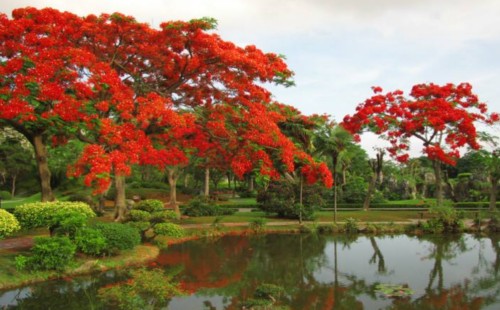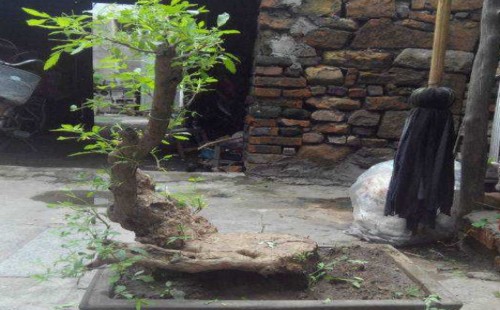Can Phoenix be planted in the north?
Phoenix beautiful plant shape, red leaves green, with high ornamental value, often used in urban landscaping, beautification, the effect is very good. However, Phoenix wood is not planted anywhere, and it also has certain requirements for the growth environment. Due to the vast territory of our country, the climate and environment in different parts of the north and south are quite different, so planting flowers and trees should also be selective, otherwise we will not be able to achieve the effect we need. So, can Phoenix trees be planted in the north?

Phoenix tree is a tropical tree species, like light, but not cold, and southern China often sufficient light, relatively high temperature and stability, so very suitable for planting Phoenix tree species. For the northern region, due to the four distinct seasons, the temperature difference between summer and winter is large, especially in winter, the temperature is often very low, and even extremely cold weather conditions will occur. This is contrary to the growth habits of Phoenix wood, so it is not suitable for outdoor planting of Phoenix wood in the north.
However, there are also basin friends in the northern region who have tried to plant Phoenix trees at home, mainly considering that the winter temperature is too low, and Phoenix trees are not cold-resistant, and indoor temperature is more convenient to regulate. Even so, indoor potted Phoenix trees in the north still face many problems. Therefore, although the potted Phoenix tree in the northern region does not freeze to death, it grows very slowly. This is mainly because Phoenix is a tropical tree species that likes light and warmth. Although it is easier to adjust the temperature indoors in the north, it is not convenient for ventilation and light. However, it cannot be placed outdoors in cold weather for maintenance. After a long time, it will naturally affect the growth of trees. Therefore, it shows the phenomenon of slow growth and low ornamental value.
According to the characteristics of the tropical growth environment, the original Phoenix itself has already adapted to the tropical climate environment. If it is suddenly planted in the north, it will inevitably break its physiological growth, thus showing various bad growth phenomena. If planted in the north, it will affect the growth and reduce the ornamental value, and it will directly freeze to death. It can be seen that the climate environment has an important impact on the growth of Phoenix, so the northern region is not suitable for planting Phoenix.
Even if it is planted in the relatively warm southern regions of China, first of all, light and temperature should be guaranteed, especially in the growing season and flowering period. The flowering period of Phoenix is generally from June to July. According to its characteristics of high temperature and sufficient light, we need to provide light and temperature protection measures in time. In winter in the south, the general temperature is not very low, but if it is attacked, for the outdoor planting of Phoenix wood, we often have no way to take timely insulation measures, so there may be slight poor growth. However, for Phoenix potted plants, we need to take timely measures to keep warm, such as bagging or moving the potted plants indoors for maintenance, to ensure that the plants are not frostbitten.
Time: 2019-06-03 Click:
- Prev

Modeling skills of Landscape Bonsai
Landscape bonsai is a combination of mountains, rocks and plants, but it focuses on the magnificent nature of the mountains and the green of plants, and the effect of coordination between the two, so how to combine them often have to follow certain rules or laws, otherwise the layout will appear more messy, unable to achieve the beauty of nature. meanwhile
- Next

The growing environment of Jingshu knot bonsai
Jingshu knot is one of the best materials for making bonsai. Old Jingshu knot generally grows rough skin and thick flesh, with a sense of vicissitudes. In addition, its shape is strange, its trunk is naturally curved, or inclined and curved, and its internodes are short. It is made into bonsai for appreciation, and its ornamental value is very high. so
Related
- Fuxing push coffee new agricultural production and marketing class: lack of small-scale processing plants
- Jujube rice field leisure farm deep ploughing Yilan for five years to create a space for organic food and play
- Nongyu Farm-A trial of organic papaya for brave women with advanced technology
- Four points for attention in the prevention and control of diseases and insect pests of edible fungi
- How to add nutrient solution to Edible Fungi
- Is there any good way to control edible fungus mites?
- Open Inoculation Technology of Edible Fungi
- Is there any clever way to use fertilizer for edible fungus in winter?
- What agents are used to kill the pathogens of edible fungi in the mushroom shed?
- Rapid drying of Edible Fungi

